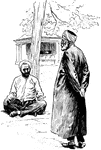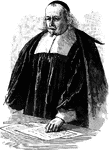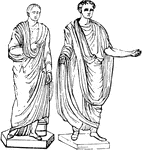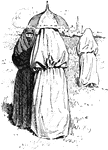Clipart tagged: ‘gown’

Lady of Burgess Family
The illustration of a lady from the Burgess family. This shows how women of nobility would dress during…

Turkish men
"There are scores of men in long gowns, with white, red, blue, or green turbans about their heads."…

A Monk with a Pointed Hood and Crosses on His Habit
Illustration of a monk, displaying an open book. His hood is pointed and appears to be unattached from…

Wantage Church Monument
A church monument of a woman in Wantage during the fourteenth century. She is wearing a dress, cape,…

Old Man in Robe Pointing to a Paper
An old man wearing an academic or ecclesiastical robe and skull cap stands and points to a paper on…

Roman Toga - View from the Back
A view of the back of a Roman toga. The man stands with his right foot slightly behind his left, as…

Toga
"Toga, a gown, the name of the principal outer garment worn by the romans, seems to have been received…

Roman Togas
"The following cuts represent, the first more ancient, and the second the later mode of wearing the…

Turkish women
"These are two Turkish women, who have their heads and faces wrapped up." —Carpenter, 1902
